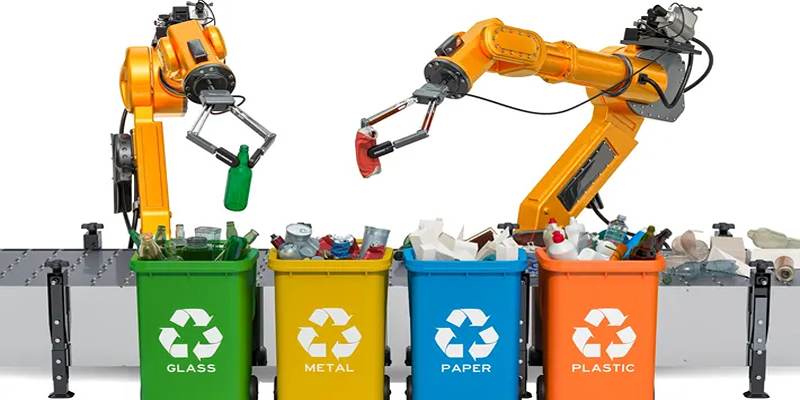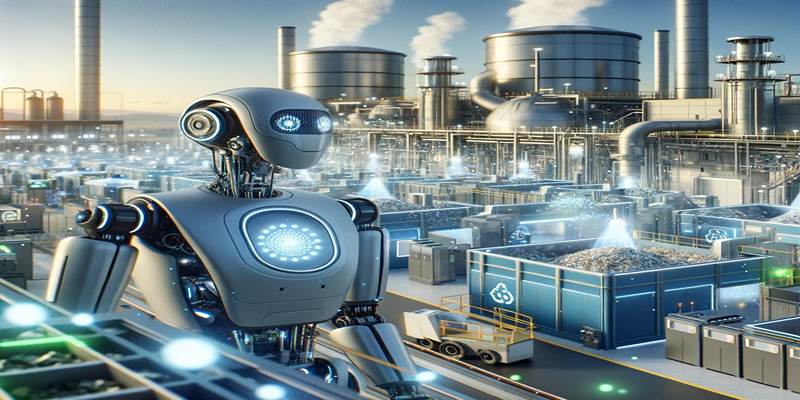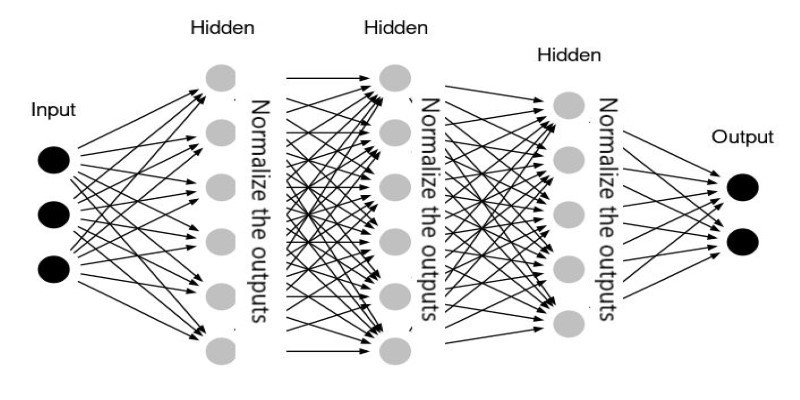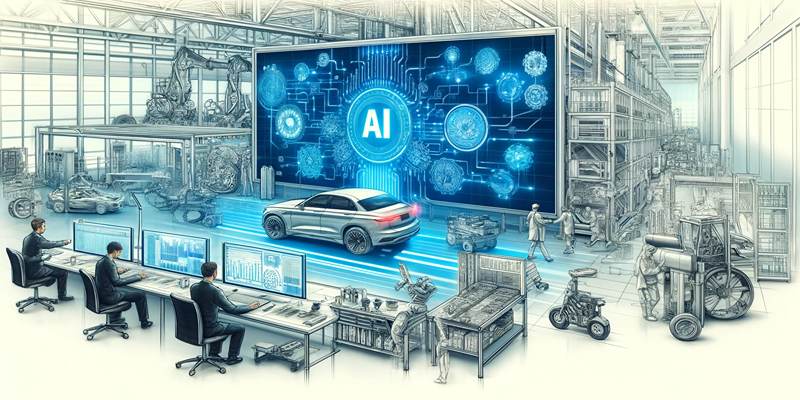Waste management is a crucial aspect of maintaining environmental sustainability, but traditional methods of waste collection, sorting, and disposal have struggled to keep up with the growing waste production worldwide. The use of Artificial Intelligence (AI) in waste management is changing the landscape, making recycling and disposal more efficient, cost-effective, and environmentally friendly.
AI-driven solutions are helping to optimize the entire waste management process, from smart sorting systems to predictive analytics for waste collection. With these advancements, AI is making it easier to recycle waste effectively, reduce landfill dependency, and create a more circular economy.
How AI is Optimizing Waste Management
Through robotics, automation, and making decisions based on data, AI plays a big part in managing waste. AI technology can help waste management companies and cities recycle more, reduce the amount of trash that ends up in landfills, and speed up the disposal process.
Some key AI applications in waste management include:
- Automated Waste Sorting – AI-powered machines identify and separate different types of waste.
- Smart Waste Bins – Sensors detect waste levels and optimize collection schedules.
- Predictive Analytics – AI predicts how much trash will be made so that management methods can be improved.
- Robotics in Recycling Plants – AI-guided robots efficiently sort recyclables.
- Waste Tracking and Monitoring – AI ensures compliance with waste disposal regulations.
These apps make it easier to handle trash, keep it clean, and get more people to recycle, which is good for both companies and the environment.
AI in Recycling: Enhancing Efficiency and Accuracy
AI-Powered Waste Sorting

Separating things correctly is one of the hardest parts of reusing trash. Mixing different kinds of trash makes recycling less effective, and materials are often thrown away instead of being used again. Artificial intelligence (AI)-powered sorting systems use computer vision and machine learning to better sort trash into different types.
- Cameras and sensors driven by AI look through trash to find metals, plastics, glass, and paper.
- Smart sorting systems categorize materials and direct them to the correct recycling bins.
- It reduces contamination, ensuring higher-quality recycled products.
By improving sorting efficiency, AI helps reduce the volume of waste sent to landfills while maximizing the recovery of recyclable materials.
Robotics in Recycling Plants
Recycling plants are increasingly using AI-powered robotic arms to enhance sorting processes. These robots can identify and pick up different types of waste at a much faster rate than humans.
- AI-enabled robots recognize various materials using deep learning algorithms.
- They operate at high speeds, increasing efficiency and reducing labor costs.
- Robotics improves workplace safety by reducing the need for manual handling of waste.
The integration of robotics in recycling plants is helping industries process waste more efficiently while minimizing operational costs and improving recycling accuracy.
Predictive Waste Management
AI-powered predictive analytics helps businesses and municipalities manage waste proactively rather than reactively. By analyzing past data and current waste trends, AI can predict future waste generation and optimize collection schedules.
- AI forecasts peak waste production periods, preventing collection delays.
- It helps reduce the frequency of unnecessary pickups, lowering fuel costs and carbon emissions.
- Municipalities can optimize waste management strategies, preventing landfill overflow.
By implementing predictive analytics, waste management systems can become more data-driven and responsive, leading to better sustainability practices.
AI in Waste Disposal: Smarter and Greener Solutions
Smart Waste Bins
AI-powered smart bins are designed to make waste disposal more efficient and environmentally friendly. These bins use sensors and IoT technology to monitor waste levels in real-time and optimize waste collection processes.
- Smart bins notify waste management teams when they are full, preventing overflow.
- They optimize collection schedules, reducing unnecessary fuel consumption.
- AI-powered sorting bins educate users on proper waste disposal, improving recycling efforts.
AI for Sustainable Landfill Management
Landfills are a major contributor to greenhouse gas emissions and environmental degradation. AI is being used to optimize landfill operations by improving waste breakdown processes and monitoring environmental impact.
- AI can predict optimal landfill management strategies to reduce methane emissions.
- Sensors powered by AI detect harmful gases and alert authorities for timely intervention.
- Machine learning models help in designing efficient landfill layouts to maximize space utilization.
By using AI to manage landfills better, authorities can mitigate environmental damage while extending the lifespan of existing waste disposal sites.
AI-Powered Waste-to-Energy Solutions

AI is also playing a significant role in waste-to-energy initiatives, where waste is converted into usable energy. Advanced AI algorithms help optimize waste incineration and biogas production to maximize energy output while minimizing emissions.
- AI helps determine the best methods for converting waste into energy.
- It ensures the efficient combustion of waste materials, reducing toxic emissions.
- AI improves the efficiency of biofuel production by analyzing waste composition.
With AI-powered waste-to-energy solutions, waste management systems can contribute to sustainable energy production while reducing landfill dependency.
Challenges in Implementing AI in Waste Management
While AI offers numerous benefits in waste management, there are some challenges to its implementation:
- High Initial Costs – Deploying AI-powered waste management systems requires a significant investment in technology and infrastructure.
- Data Collection and Management – AI systems require large amounts of data to function effectively, requiring efficient data handling solutions.
- Public Awareness and Participation – Encouraging the public to engage with AI-powered waste systems is essential for success.
Overcoming these challenges will require strong collaboration between governments, businesses, and technology providers to scale AI solutions in waste management effectively.
Conclusion
AI is transforming waste management by enhancing recycling, optimizing disposal methods, and reducing environmental impact. From automated waste sorting systems to predictive analytics and waste-to-energy solutions, AI is making waste management smarter, cleaner, and more sustainable. Despite challenges such as high costs and the need for advanced infrastructure, AI-driven waste management solutions offer immense potential in building a future with less pollution, higher recycling efficiency, and smarter waste disposal practices.











